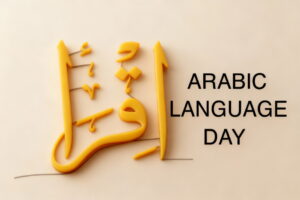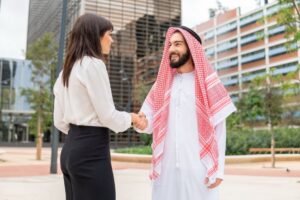
The Hashemite Royal Family
Table of Contents
ToggleRoyal Hashemite Family
The Royal Hashemite Family has guided the Hashemite Kingdom of Jordan since its founding, embodying a rare blend of ancient lineage and modern leadership. With roots tracing directly to the Prophet Muhammad, this royal family holds a unique position not just in Jordan, but in the entire Middle East. Their story is one of resilience, nation-building, and regional influence.
Understanding the royal family gives learners deeper cultural insight into modern Jordan—and how language, heritage, and diplomacy are woven together in Jordanian identity.

The Hashemite Dynasty
The Hashemites belong to the Banu Hashim clan of Quraysh in Mecca. They are direct descendants of the Prophet Muhammad, giving them religious and historical significance. Their leadership once extended across the Hijaz region of what is now Saudi Arabia before British alliances and shifting borders led them to Jordan in the early 20th century.
The Hashemite presence in Jordan officially began with the Great Arab Revolt (1916–1918), and culminated in the creation of the Hashemite Kingdom of Jordan in 1946.
The Royal Hashemite Crown
The Royal Hashemite Crown is more than ceremonial—it’s a visual representation of Jordan’s sovereignty, Islamic heritage, and Hashemite lineage. Each part of the crown carries deep political and spiritual symbolism.
The Sash
The sash (known in Arabic as الوشاح الملكي) worn by Jordanian monarchs is rich in symbolic value. It is often embroidered with national motifs and reflects the monarchy’s duty to protect and serve. It also marks high ceremonies and royal milestones, such as coronations or national celebrations.
The Two Flags
The crown is traditionally depicted with two crossed flags, representing:
- The national flag of Jordan, which contains the seven-pointed star (symbolizing the seven verses of Al-Fatiha and Arab unity)
- The Great Arab Revolt flag, honoring the Hashemite-led movement that shaped modern Arab nationalism
These flags emphasize Jordan’s unique dual identity—both as a modern nation and as heir to the legacy of Arab independence.
The Eagle
The eagle, or النسر الملكي, is a central royal emblem in the crown’s insignia. It symbolizes strength, dignity, and guardianship. Inspired by Qur’anic and Arab traditions, the eagle is often shown with outspread wings, holding a shield or banner. It reflects the monarchy’s protective role over the people and the nation.
Key Monarchs in Modern Jordan
King Abdullah I (Reign: 1946–1951)
Founder of modern Jordan declared independence from British mandate rule in 1946, and advocated for pan-Arab unity.
His reign established the first national institutions, including schools and royal councils. He was assassinated in Jerusalem in 1951.
King Hussein (Reign: 1952–1999)
Became king at 17 after the abdication of his father, King Talal, due to health issues. Ruled for nearly five decades, modernizing infrastructure, education, and diplomacy.
Known as “Father the Late King,” King Hussein was deeply respected. He worked tirelessly to promote peace, including with Israel, and fostered strong ties with Western and Arab nations alike.
Fun Fact: Hussein was born in Amman in 1935 and educated in both Jordan and the UK.
King Abdullah II (Reign: 1999–Present)
Took the throne in February 1999 after his father’s passing, Son of His Majesty King Hussein and Her Royal Highness Princess Muna al-Hussein.
His Majesty King Abdullah II, born in Amman on January 30, 1962, has prioritized innovation, digital economy, women’s empowerment, and youth development.
Initiatives:
- Founded King’s Academy and several tech initiatives
- Leads international dialogues on interfaith tolerance
- Supports modern military reforms and regional diplomacy
The Royal Family’s Role Today
Constitutional Monarchy System:
Jordan operates under a constitutional monarchy, where the king plays both symbolic and executive roles. He appoints the prime minister, signs laws, and is the commander-in-chief of the armed forces, but within the framework of an elected parliament and judiciary.
Cultural Patronage:
The Royal Family of Jordan actively supports:
- Art and literature festivals
- Youth programs
- Science and technology development
- Preservation of ancient Jordanian sites like Petra and Jerash
Members like Princess Iman (born 1996) and Prince Hashem (born 2005) represent the younger generation’s role in these causes.
Arabic Through Royal Context
1. Formal Address Terms
His Majesty – جلالة الملك (jalālat al-malik)
Her Royal Highness – صاحبة السمو الملكي (ṣāḥibat as-sumūw al-malakī)
Crown Prince – ولي العهد (walī al-ʿahd)
2. Royal Institutions Vocabulary
Royal Court – الديوان الملكي (ad-dīwān al-malakī)
Government Cabinet – مجلس الوزراء (majlis al-wuzarāʾ)
Ministry of Foreign Affairs – وزارة الخارجية (wizārat al-khārijiyya)
3. Diplomatic Phrases to Master
“تشرفنا بلقائكم، جلالة الملك.”
Tasharrafnā biliqāʾikum, jalālat al-malik.
– “We are honored to meet you, Your Majesty.”
“نتمنى دوام الازدهار للمملكة الهاشمية.”
Natamannā dawām al-izdihār lil-mamlaka al-hāshimiyya.
– “We wish continued prosperity for the Hashemite Kingdom.”
Final Thought
The Royal Hashemite Family represents continuity, modernization, and identity in Jordan. Their story—from great grandfather Sharif Hussein’s revolt to the reign of King Abdullah II—offers a powerful window into the country’s past, present, and future.
To truly understand Jordan, one must appreciate the language of diplomacy, tradition, and leadership embedded in the royal legacy.



